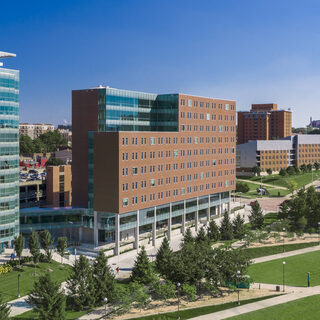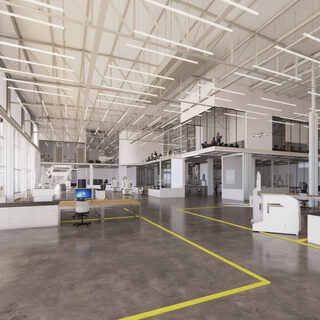Tradeline's industry reports are a must-read resource for those involved in facilities planning and management. Reports include management case studies, current and in-depth project profiles, and editorials on the latest facilities management issues.
Latest Reports
Program Distilling 20 Years of Architectural Data Guides Design of New Residence Hall at University of Cincinnati
Marian Spencer Hall at the University of Cincinnati was designed using 20 years of data about the size, orientation, and distribution of various spaces in 20 residence halls. The upshot: Residence halls are not just places for students to sleep. They can set the tone for their ability to study, socialize, and engage with the campus community that will be their home for years. How well the facility achieves that balance can help determine a student’s academic success.
Ohio State’s Pelotonia Research Center Emphasizes Interdisciplinarity
The vision of biomedical research as a collective effort is resoundingly clear in the $237.5 million Pelotonia Research Center, the first building to be completed in the 350-plus-acre Carmenton district on the campus of The Ohio State University (Ohio State) in Columbus. Opened in May 2023, the center integrates almost 100,000 sf of wet labs, 25,000 sf of computational labs, and 20,000 sf of core labs in a single facility designed to host interdisciplinary collaborations and public-private initiatives that focus on solving some of the most critical health challenges. With life science as the backbone of the research endeavor, current projects range from modeling cancer progressions to 3D printing of patient-specific anatomic models.
Rice University Builds Infrastructure for Leadership in Advanced Materials Science
Rice University’s Ralph S. O’Connor Building for Engineering and Science, which opened in September 2023, is a 250,000-gsf center for advanced materials sciences designed to facilitate interdisciplinary collaboration by bringing together researchers in the fields of chemistry, biomolecular engineering, physics, and nanoengineering who had previously been scattered across 13 different buildings around the campus.
Renovation Strategies for Specialized Laboratory Environments
How do you know if an existing building has what it takes to house a new specialty laboratory? The planning effort has to go beyond the typical process for a conventional lab renovation of defining program needs and investigating existing conditions. It must instead drill down into the unique aspects of the specialized environment, including illuminating the key attributes of the already-occupied and operational facility.
Space Utilization Data Is Holy Grail for Cost-Effective Real Estate Planning, Hybrid Work Design, and Capital Allocation
Understanding space utilization in today’s hybrid academic world is essential to creating a positive, productive work environment for students, faculty, and staff. A nationwide study conducted by the National Center for Education Statistics shows 53% of students are enrolled in at least one online class. Universities are rethinking their priorities, ensuring their technology and environments address both in-person and online learning with a modern system for managing space usage. University leaders can make better space management decisions by gathering data relevant to how their spaces are used, including how many rooms and desks are available and how often they are used, how rooms are assigned, and how the stakeholders rate their overall experience.





